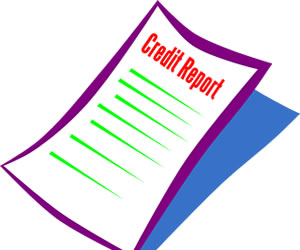Understanding a Credit Card Minimum Payment Increase
Have you ever been shocked to see your credit card minimum payment increase when you opened your credit card statement? Before you jump to conclusions and think that your credit card company is out to get you, realize that how your minimum amount due is calculated can vary from month to month.
It is based on the interest rate and the balance you carry on your card (which can vary), as well as the method your creditor uses to calculate the minimum payment. If you used your card to purchase anything during the billing period, your minimum payment will go up along with your balance. If you have made a late payment or gone over your credit limit, there will likely be fees imposed, which can increase the minimum payment as well.
Credit Card Minimum Payment Guidelines
Back in 2003, due concern over consumers not making any headway in paying off loans, it was proposed that credit card companies establish a 10-12 year payback period for reducing or eliminating credit card balances.
To accomplish the accelerated payback schedule, the Office of the Comptroller of the Currency (OCC) in conjunction with the Board of Governors of the Federal Reserve System, the Federal Deposit Insurance Corporation, and the Office of Thrift Supervision established some guidelines.
They proposed that the credit card minimum payment increase to cover all fees and interest charges, as well reduce the principal by 1% each month. Starting at the end of 2005, credit card companies began raising the minimum payment rate on their accounts to comply with the guidelines.
Currently, lenders must comply with the Credit Card Accountability Responsibility and Disclosure Act (Credit CARD Act) guidelines when determining how your minimum payment will be calculated. An important aspect of the Act is that lenders are prohibited from setting the minimum payment so low that it results in negative amortization (this is when the payments don't even cover the interest accrued).
Why the credit card minimum payment increase was needed
The intent of these guidelines is to help prevent consumers from paying on credit card balances for 20-30 years. Before the guidelines were instituted, the monthly minimum payment on most credit cards was generally 2% of the outstanding balance. This barely covers the interest charges, and leaves very little to apply to towards the actual balance.
For example, if you only paid the minimum 2% on a $2000 balance that charges 18% interest, it would take you about 24 years to pay off your credit card. And that's considering that you never charge on that card again. Using the same example, if the minimum payment increases to 4%, then it will only take a little over 8 years to pay off the balance, which will save you over $3300 in interest fees. If you would like to see how paying different amounts will affect how long it will take to pay off your balance, check out the credit card minimum payment calculator from BankRate.
As part of the Credit CARD Act, credit card companies are required to post disclosures on monthly statements of the consequences of only making minimum payments. Your monthly statement will also show the payment that would be required to pay off your debt in three years.
Now it's important to note that if you are determined to pay off your debt in three years, you will need to stick with a set repayment amount. This is because the minimum monthly payment amount drops as your balance is paid down. So, once you decide to get out of debt, take that month's credit card statement and write down the amount it will take to pay off your debt in three years. For example, if your statement shows you will need to pay $100 per month to be out of debt in 3 years, you will need to continue paying $100 each month and not add any new debt to pay the balance off in three years.
Finding ways to afford Your credit card minimum payment
Even though an increased minimum payment is good in the long run, if you're like most people, you may struggle to make the payments at time. Below are some ideas to help you save money to cover the increase:
- Brown-bag your lunch at work a couple of times a week. This can easily save you $40 a month (and is probably healthier in the long run).
- Stop using your credit cards for everyday purchases to prevent your payment from increasing even more.
- Save your pocket change instead of spending it.
- Car-pool with a friend to cut down on car and gas expenses.
- Call your utility companies to be put on a monthly average billing plan to prevent seasonal fluctuations.
- If you don't watch many movies through your premium satellite or cable channels, consider dropping this option from your plan. This can easily save you $10 a month.
- Subscribe to your favorite magazines instead of buying them at the grocery store. If you have friends with the same interests (but different subscriptions), consider exchanging magazines at the end of the month. Everyone benefits this way and saves money as well.
- Clip coupons and stock up on sale items at the grocery store.
These are just a few ideas to get you started saving enough money for your increased payments.
If you honestly can't make the minimum payment, call your credit card company to see if they will negotiate a more reasonable payment arrangement, or reduce your interest rate. Most creditors would rather adjust the payment schedule temporarily than to have you default on the account.

